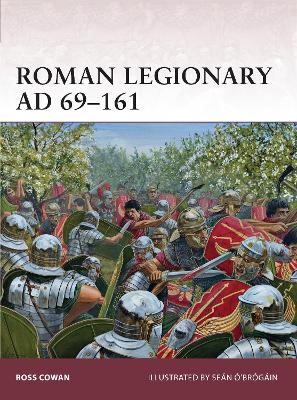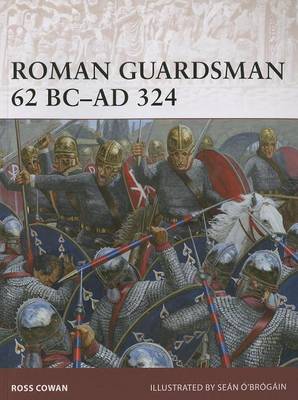Warrior
4 total works
Between AD 69 and 161 the composition of the Roman legions was transformed. Italians were almost entirely replaced by provincial recruits, men for whom Latin was at best a second language, and yet the ‘Roman-ness’ of these Germans, Pannonians, Spaniards, Africans and Syrians, fostered in isolated fortresses on the frontiers, was incredibly strong. They were highly competitive, jealous of their honour, and driven by the need to maintain and enhance their reputations for virtus, that is manly courage and excellence. The warfare of the period, from the huge legion versus legion confrontations in the Civil War of AD 69, through the campaigns of conquest in Germany, Dacia and Britain, to the defence of the frontiers of Africa and Cappadocia and the savage quelling of internal revolts, gave ample opportunity for virtus-enhancing activity. The classic battle formation that had baffled Pyrrhus and conquered Hannibal was revived. Heroic centurions continued to lead from the front, and common legionaries vied with them in displays of valour. The legions of the era may have been provincial but they were definitely Roman in organisation and ethos.
The Roman centurion, holding the legionaries steady before the barbarian horde and then leading them forward to victory, was the heroic exemplar of the Roman world. This was thanks to the Marian reforms, which saw the centurion, although inferior in military rank and social class, superseding the tribune as the legion’s most important officer. This period of reform in the Roman Army is often overlooked, but the invincible armies that Julius Caesar led into Gaul were the refined products of 50 years of military reforms.
Using specially commissioned artwork and detailed battle reports, this new study examines the Roman legionary soldier at this crucial time in the history of the Roman Republic from its domination by Marius and Sulla to the beginning of the rise of Julius Caesar.
Using specially commissioned artwork and detailed battle reports, this new study examines the Roman legionary soldier at this crucial time in the history of the Roman Republic from its domination by Marius and Sulla to the beginning of the rise of Julius Caesar.
From the civil wars of the Late Republic to Constantine's bloody reunification of the Empire, elite corps of guardsmen were at the heart of every Roman army. Whether as bodyguards or as shock troops in battle, the fighting skills of praetorians, speculatores, singulares and protectores determined the course of Roman history. Modern scholars tend to present the praetorians as pampered, disloyal and battle-shy, but the Romans knew them as valiant warriors, men who strove to live up to their honorific title pia vindex - loyal and avenging. Closely associated with the Republican praetorian cohorts, and gradually assimilated into the Imperial Praetorian Guard, were the speculatores. A cohort was established by Marc Antony in the 30s BC for the purposes of reconnaissance and intelligence gathering, but soon the speculatores were acting as close bodyguards - a role they maintained until the end of the first century AD. This title will detail the changing nature of these units, their organization and operational successes and failures from their origins in the late Republic through to their unsuccessful struggle against Constantine the Great.
Diocletian and Constantine were the greatest of the Late Roman emperors, and their era marks the climax of the legionary system. Under Constantine’s successors the legions were reduced in size and increasingly sidelined in favour of new units of elite auxilia, but between AD 284 and 337 the legions reigned supreme. The legionaries defeated all-comers and spearheaded a stunning Roman revival that humbled the Persian Empire and reduced the mighty Goths and Sarmatians to the status of vassals. This title details the equipment, background, training and combat experience of the men from all parts of the empire who made up the backbone of Rome’s legions in this pivotal period.



